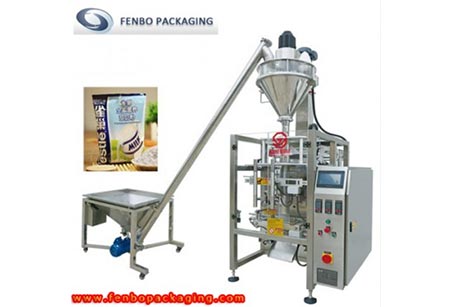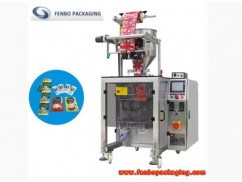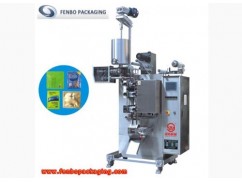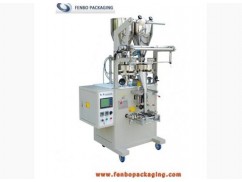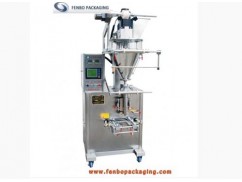What is the principle of form fill seal machine?
May 30,2024 | Views: 1229
The principle of a form-fill-seal (FFS) machine is based on three primary processes: forming the packaging material into a specific shape, filling it with the product, and sealing it to create a final packaged product. These machines are widely used in the packaging industry for a variety of products, including food, beverages, pharmaceuticals, and household goods. There are two main types of FFS machines: vertical form-fill-seal (VFFS) and horizontal form-fill-seal (HFFS). Here's an overview of their operation principles:
Shaping: The film is guided over a forming collar (or shoulder), which shapes it into a tube. The edges of the film overlap and are sealed longitudinally using heat, creating a continuous vertical tube.
Shaping: The film is shaped into a pouch or container using forming dies or molds. The material can be folded and sealed along the edges to create a pouch or tray shape.
Cutting: The sealed packages are cut apart if they were formed in a continuous strip.
Customization: Machines can be customized for different packaging materials (e.g., plastic films, laminates) and product types, offering flexibility in packaging design.
The form-fill-seal machine efficiently integrates the processes of forming, filling, and sealing into a single automated operation, enhancing production speed, consistency, and hygiene in packaging.
Prev: What is a vertical form fill seal packaging machine?
Next: What is the form fill seal method?
Vertical Form-Fill-Seal (VFFS) Machines:
1. Forming:
Material Feeding: A continuous roll of flexible packaging material (film) is fed into the machine.Shaping: The film is guided over a forming collar (or shoulder), which shapes it into a tube. The edges of the film overlap and are sealed longitudinally using heat, creating a continuous vertical tube.
2. Filling:
Product Dispensing: The product to be packaged is measured and dispensed into the formed tube from above. This can be done using various types of filling systems depending on the product (e.g., auger fillers for powders, volumetric fillers for liquids).3. Sealing:
Vertical Sealing: The vertical seam is created by heat sealing the overlapping edges of the film as it passes through the machine.Horizontal Sealing and Cutting: The filled tube is sealed horizontally at regular intervals, creating individual packages. Simultaneously, the machine cuts the sealed packages from the continuous tube, producing finished, sealed products.
Horizontal Form-Fill-Seal (HFFS) Machines:
1. Forming:
Material Feeding: Similar to VFFS, a continuous roll of packaging material is fed into the machine.Shaping: The film is shaped into a pouch or container using forming dies or molds. The material can be folded and sealed along the edges to create a pouch or tray shape.
2. Filling:
Product Dispensing: The product is dispensed into the formed pouches or containers through various filling mechanisms appropriate for the product type.3. Sealing:
Sealing: The open edges of the filled pouches or containers are sealed using heat or other sealing methods (e.g., ultrasonic sealing). For example, a top seal may be applied to a pouch.Cutting: The sealed packages are cut apart if they were formed in a continuous strip.
Additional Features:
Automation: Both VFFS and HFFS machines are typically automated and can be integrated with additional systems for printing, labeling, and inspection.Customization: Machines can be customized for different packaging materials (e.g., plastic films, laminates) and product types, offering flexibility in packaging design.
The form-fill-seal machine efficiently integrates the processes of forming, filling, and sealing into a single automated operation, enhancing production speed, consistency, and hygiene in packaging.

